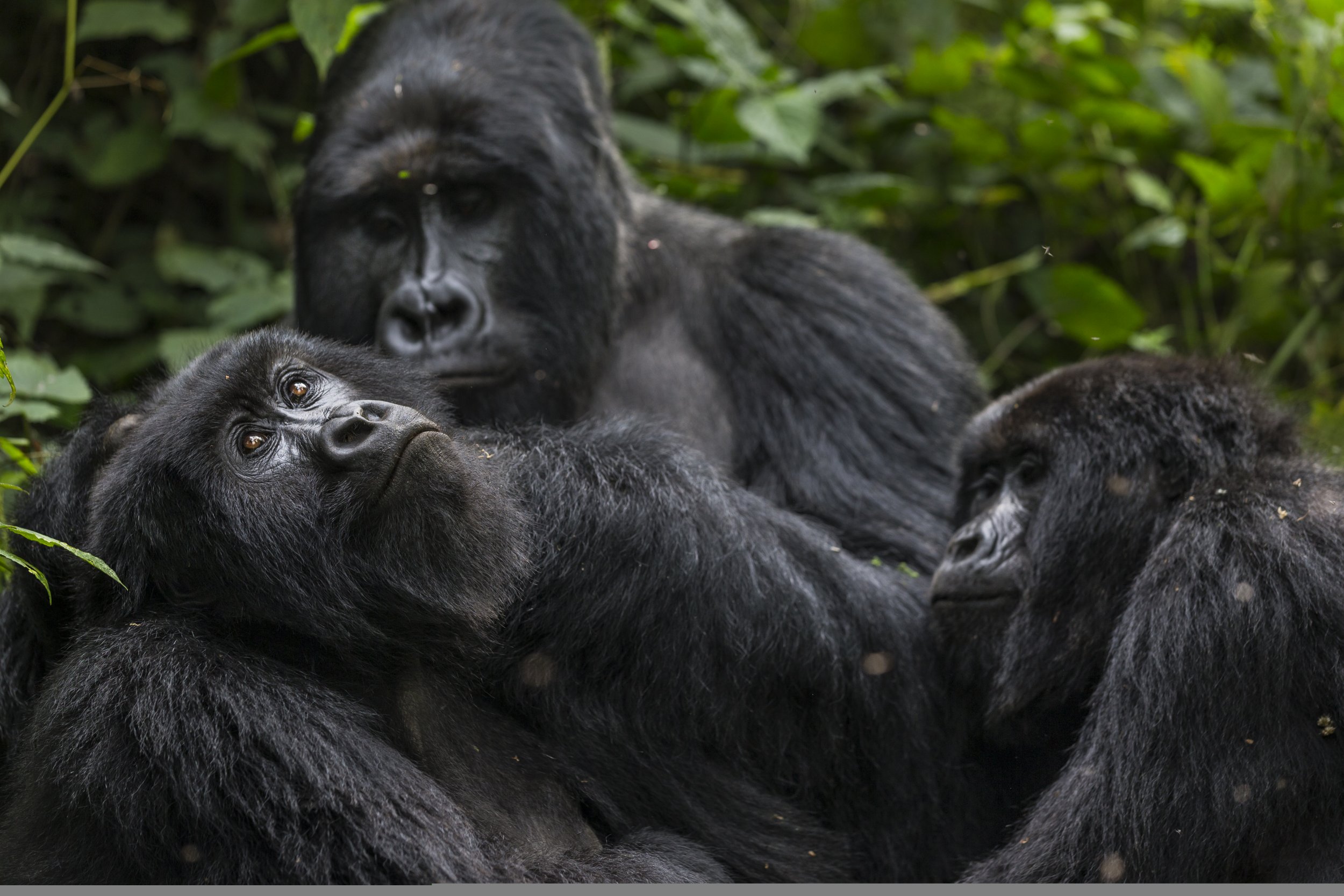
Most people are aware that eating too much salt is bad for your health. But this is especially true for mountain gorillas in central Africa who sometimes risk their lives to find salty food, according to a study published in the journal Biotropica.
A team from the University of Western Australia (UWA), in collaboration with the Dian Fossey Gorilla Fund, examined critically endangered mountain gorillas in Rwanda's Virunga Mountains to shine a light on the mystery of why they leave the relative safety of their natural habitat—a national park refuge—to feed on specific plants that only grow outside its boundaries.
"We've been wondering for a while about the incentives for these escapades," Cyril Grueter, lead author of the study from UWA's School of Human Sciences and the Centre for Evolutionary Biology, told Newsweek. "After all, the gorillas get in conflict with the local farmers, so these excursions are not risk-free. We reasoned that some of the plants they target when outside the park must be nutritionally extremely active."
"Their main target is eucalyptus—specifically the bark—a tree that is not native to the area but has been planted extensively for human use in the area surrounding the park," he said.
The gorillas also search for other types of plants which grow in the mountains. In fact, the apes have been spotted climbing to very high altitudes where mean annual temperatures hover between around 39 and 48 degrees Fahrenheit, putting themselves at risk of hypothermia.
"They sometimes venture to an area near the top of volcanoes where they harvest giant lobelias and groundsels, tree-like plants that only grow in these inhospitable mountain environments.
According to the paper, the reason for such risky behavior is to satisfy the need for salt, or sodium, in their diets.
"Sodium is a nutrient that is critically important for physiological processes such as muscle and nerve function and maintaining fluid levels in various parts of the body," Grueter said.
Sodium deficiency can affect bone mineralization, growth, and reproduction. And it can also cause the animals to do all sorts of crazy things to get more of it in their diets, according to the researchers.
Herbivorous mammals in forested habitats have ways of countering sodium deficiency, including natural licking, eating earth or soil-like substances, or eating sodium-rich plants.
Western lowland gorillas and other herbivores in central Africa, for example, are attracted to swampy forest clearings where they can easily consume such sodium-rich plants. But mountain gorillas in this region forage mainly on stems and the leaves of ground plants and vines, which are high in protein but low in sodium, meaning they sometimes have to supplement their diet via other means.
For their study, the researchers set out to measure the nutritional content of all the plants that the gorillas eat, including the bark of the eucalyptus tree—the gorillas' most frequently eaten food when they were outside of the park—and that of the four most commonly eaten foods inside the reserve.
They found that the eucalyptus bark had the most sodium out of the plants sampled. Meanwhile, the staple foods of the gorillas inside the park were relatively sodium poor, explaining why they took such risks to find plants outside of the reserve.
"We found that eucalypts were more than a hundred times richer in sodium than the gorillas' staples inside their park and that the gorillas obtain up to two thirds of their sodium when consuming eucalypts," Grueter said. "The [high-altitude plants] are also quite rich in sodium, but not nearly as rich as the eucalyptus, which really are exceptional in this regard."
Mountain gorillas also go to other extremes to get their salt fix, consuming hardened sodium-rich soils—which they sometimes have to compete for—and ingesting decaying wood, for example.
The team hope that the latest findings will help conservationists come up with solutions for how to adapt local human land use so that conflicts with salt-hungry gorillas can be mitigated.
"Crop feeding by mountain gorillas has become an issue of increasing attention by conservation practitioners and researchers alike, as it might be considered a safety hazard for both gorillas and people and a source of economic losses for the local communities living at the edge of the park," the authors wrote in the study. "The risk of disease transmission is also a serious concern when gorillas get in close proximity to humans and their livestock."
This article has been updated to include additional comments from Cyril Grueter.
Uncommon Knowledge
Newsweek is committed to challenging conventional wisdom and finding connections in the search for common ground.
Newsweek is committed to challenging conventional wisdom and finding connections in the search for common ground.
About the writer
Aristos is a Newsweek science reporter with the London, U.K., bureau. He reports on science and health topics, including; animal, ... Read more
To read how Newsweek uses AI as a newsroom tool, Click here.








